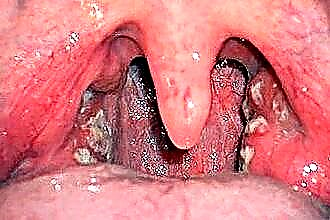What is transmural infarction
There are several forms of cardiac muscle necrosis, and the most deadly and destructive of them is acute transmural myocardial infarction. The reason for the development of this pathology is an acute insufficiency of blood flow through the system of coronary arteries, which are responsible for supplying cardiac tissues with oxygen and nutrients. This deficiency of coronary blood flow can be caused by two phenomena:
- sudden complete cessation of blood flow through the coronary arteries;
- inconsistency of oxygen consumption by the heart muscle with its flow through these vessels.
The cause of the occurrence may be atherosclerosis of these vessels, their narrowing, the formation of a single large atherosclerotic plaque, thrombosis, a sudden powerful load on the myocardium, spasm of cardiac vessels associated with neuro-humoral disorders.
What is the difference from other forms
At the location of the lesion in the heart muscle, the following forms of myocardial infarction are distinguished:
- intramural - in the thickness of muscle tissue;
- subepicardial - under the outer shell;
- subendocardial - under the inner membrane;
- transmural - passes through the entire thickness of the muscle.
The prefix "trance" is translated as "through". That is, the zone of necrosis affects a huge array of the myocardium. It runs through the entire muscle from the pericardium to the endocardium.
The severity of the pathology is evidenced by the following fact: 20% of all registered cases of sudden death are associated precisely with the development of transmural infarction. 20% of patients affected by it die within one month.
Pathology has a clear gender link: out of 100 clinical cases of transmural infarction, 16 occur in women and 84 in men.
How to identify and suspect
The development of the disease can be suspected by a number of characteristic symptoms:
- pallor;
- asthma attacks;
- sinking heart;
- painful tachycardia;
- acute squeezing or prolonged undulating pain.
Heart pain is common in most cases. It radiates to various anatomical structures located in the left half of the body: scapula, arm, ear, part of the dentition, and so on.
Key symptoms
Symptoms of transmural myocardial infarction are different in accordance with the period of development of the pathology. Let's consider those stages of the formation of necrosis, at which, subject to timely medical intervention, it is possible to save not only the patient's life, but also the integrity of his heart muscle.
Prodromal period
The patient begins to worry about precursors similar to unstable angina pectoris:
- increased frequency of pain attacks with localization behind the sternum;
- the development of painful sensations in response to physical activity that did not previously cause such, or even at all at rest;
- when nitro drugs are used to relieve pain, the previous dose does not bring the usual relief; more and more drugs are required to achieve the desired effect.
All these manifestations indicate a rapidly developing blockage of the coronary arteries. With a further decrease in the volume of blood passing through them, myocardial infarction is likely to develop. Therefore, the clinical protocol for acute coronary syndrome requires compulsory hospitalization of such patients.
The sharpest period
If time is lost, and sufficient help was not provided in the prodrome, then the most acute period begins - the onset of necrotic changes in the heart muscle. The largest number of deaths from transmural infarction occurs precisely during the acute period. Although, on the other hand, the therapy carried out at this time is the most effective - up to full recovery.
The symptomatology is manifested by an anginal status, - very strong pressing, boring or dagger pain in the retrosternal region with irradiation characteristic of the heart. Its duration is more than half an hour, even taking 3 tablets of nitroglycerin does not bring relief. A number of other symptoms join:
- anxiety;
- cold sweat;
- fear of dying;
- severe weakness;
- hypotension (more often) or hypertension (less often).
In addition to the standard anginal attack, transmural infarction can manifest itself with atypical syndromes:
- abdominal, with epigastric pain radiating to the back, nausea, belching, flatulence, vomiting, after which there is no relief, tension of the abdominal muscles;
- atypical angina, with pain in the limbs, lower jaw, throat;
- asthmatic, with an attack of shortness of breath, the development of which is based on pulmonary edema or cardiac asthma;
- arrhythmic, with a predominance of arrhythmia symptoms over pain or no pain at all;
- cerebrovascular, with fainting, vomiting, nausea, dizziness; sometimes - with focal cerebral manifestations.
Focusing on the symptoms, we can suspect a heart attack, but electrocardiography will certainly help to determine it. We'll talk about it in the next section.
How to establish the localization of transmural infarction by ECG
Most often, transmural infarction develops in the left ventricle - on the anterior, posterior, lateral, lower walls, apex. The right ventricle is much less likely to suffer. Below I have placed a table that shows the changes on the electrocardiogram at different localization of the lesion, as well as information about the blockage of which particular vessel led to this situation.
Localization of transmural infarction | Which vessel is blocked | Typical signs of lesion in standard leads of electrocardiographic examination |
Front wall | Left coronary artery or its branches | Chest leads V4-V6 |
Bottom wall | Right coronary artery or left circumflex artery | II, III, aVF - ST elevated with positive T, sometimes large Q |
Tops | Anterior interventricular artery | II, III, aVF, V1-V6 - ST elevated, inversion T, Q - deep |
Right ventricle | Right coronary artery | III, right V1-V4 - ST raised |
Back and side | The circumflex branch of the left coronary artery | V5, V6, - deep S, amplitude drop R; II, III, aVF, V5, V6 - serrated QRS; V1, V2, V3 - reciprocal changes; Reliable transmural myocardial infarction on ECG in III, aVF, V5, V6 - QS complexes |
Lateral basal | aVL - ST is elevated, V1-V2 - high R, ST segment is omitted. | |
Posterior basal | Right posterior descending artery or left circumflex | Reciprocal only: V1-V2 - increased amplitude R, decreased depth S; V1-V4 - ST depression; V1-V4, aVR - positive high T |
Wide at the back | Right coronary artery, above the branch to the AV and sinus nodes | II, III, aVF - pathological Q, elevated ST, changed T; V6 - deep S. Reciprocal: V1 - V2 - increase in R, decrease in S; V1 - V3 - positive increased T; V1 - V4 - lowering ST |
The most pronounced symptomatology is acute transmural infarction of the anterior wall of the left ventricular myocardium.
If, with extensive transmural infarction, conduction blockages develop along the posterior wall of the left ventricle, it means that the necrosis has passed to the septum between the ventricles.
Prediction: is there a chance to survive
Given the severity of the lesion, the prognosis for transmural myocardial infarction is very poor. Statistics show that 40% of patients with this pathology die before being admitted to the hospital.
But the chance of survival remains large enough, and it can be calculated using a special GRACE scale. The risk of death of a patient is assessed as high, medium or low, depending on how many points he received as a result of the calculation.
The scale takes into account the following criteria:
- age;
- whether there is congestive heart failure;
- whether the patient has previously suffered myocardial infarction;
- the level of systolic blood pressure;
- whether there is ST depression on the ECG;
- serum creatinine;
- whether the content of cardiospecific enzymes has increased;
- whether the patient underwent PCI in an inpatient setting.
The result represents the degree of probability for the subject to die within the next six months from complications of transmural myocardial infarction. This rate ranges from less than 1% to 54%.
To use the scale online, follow the link here.
Transmural myocardial infarction of any localization is a serious challenge not only to the patient's body, but also to doctors who will fight for his life. And victory over the disease can be achieved only with complete understanding and mutual assistance of the patient himself, his relatives, the ambulance service, the clinic and the hospital. Only the well-coordinated work of all these units will give a person a chance for salvation.
The most accurate preliminary and unmistakable refined diagnosis will allow you to choose the right direction of therapy. Fast, full-fledged treatment and mandatory rehabilitation are able to return the patient to his usual life and minimize the consequences of a heart attack.
If in your life or professional activity you have come across patients who have had such an ordeal as transmural myocardial infarction, tell us about it. Your valuable experience can be useful to anyone in order to help a person in trouble in time.
Case from practice
I want to tell you about one case when a patient who was admitted to an inpatient department with a seemingly completely external diagnosis, during a full examination, was diagnosed with transmural myocardial infarction. The patient, unfortunately, died. However, the case is instructive, showing how different pathologies can enhance the negative influence of each other on the human body.
A 72-year-old female patient was hospitalized with a diagnosis of gastrointestinal bleeding. Her complaints were limited to nausea, weakness and dizziness. A day later, the heart rate was 110 beats / minute, and the blood pressure was 90/60 mm Hg.
A history of ischemic heart disease, postinfarction cardiosclerosis of NK grade 2, against the background of grade 3 hypertension, complicated by a paroxysmal form of atrial fibrillation. Comorbid osteoarthritis was a concomitant pathology.
The outpatient took Bisoprolol, Losartan, Diclofenac, Pradaksa.
Examination in the hospital revealed numerous erosive changes in the gastric mucosa, anemia with rapidly decreasing hemoglobin levels.

After the ECG on the film, acute focal changes were found in the left ventricle, on its anterior wall.

A troponin test carried out immediately gave a positive result.
I would like to draw your attention to the fact that anemia is a risk factor for cardiovascular disease. It increases the frequency of the manifestation of the following nosological forms:
- myocardial infarction and its recurrence;
- disorders of the left ventricle;
- hospital mortality (almost one and a half times);
- complications from the cardiovascular system.
As expected, severe post-hemorrhagic anemia aggravated the condition, provoked the development of transmural myocardial infarction and, ultimately, led to the death of the patient. And the basis of all the problems, which significantly aggravated the patient's condition, was the erroneous prescription of a combination of drugs that caused erosive damage to the gastric mucosa with subsequent gastrointestinal bleeding.



